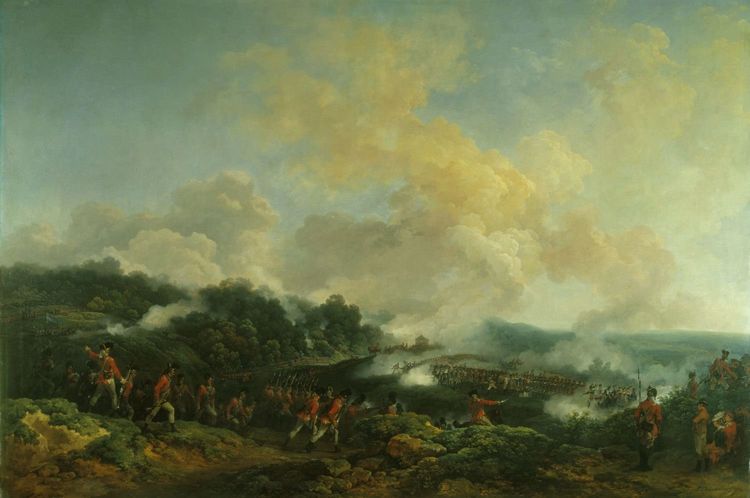Annotation:Warley Camp
X:13 T:Warley Camp. Roose 422 M:6/8 L:1/8 Q:3/8=110 B:Roose MS, 1850 Z:Village Music Project, M.W.Humphreys 2019 K:C cdc gaf | efd c3 | cde def | edc BAG | cdc gaf | efd c2B | Afe dcB | c3 c3 :| |:ede cde | faf d2f | ede cde | dec BAG | ede cde | def fga | gfe dcB | c3 c3 :|

After the mock attack, which took place on the slopes of Childerditch and Little Warley Commons, the King was introduced to several officers who had taken part. He expressed his ‘great satisfaction at the appearance, discipline, and good order of the several regiments, and the royal artillery; and likewise his approbation of the manoeuvres which were performed.
The event was depicted in a painting byPhilipp Jakob de Loutherbourg (1740-1812), dated 1779.

